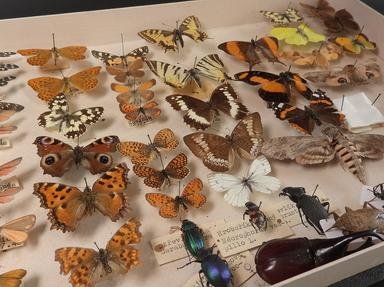Quiz Answer Key and Fun Facts
1. The family name for robber flies is what?
2. Robber flies take their prey on the wing. Their method of doing this is best described as what?
3. There is a genus of robber flies known as Laphria. What insects does this type commonly mimic?
4. Another genus of robberflies involved in mimicry is Leptogaster. What insects do some species of this type mimic?
5. The Proctacanthus genus of robber flies are known as being particularly large. Which prey type could an adult member of this genus catch and consume?
6. Flies are distinguished by having two wings. Their second set of wings has become a couple of knobbed structures past their first set called halteres. Robber flies usually have brightly hued halteres. What is it thought that these knobbed organs aid in doing?
7. Robber flies have natural enemies. Choose the answer that best describes the robber fly's foes.
8. Robber flies, having caught their prey, then employ a sharp beak to do the rest. What is this beak used to do?
9. Little is known of the larval life of robber flies. Where is it thought they spend most of their time?
10. Which of the following characterises robber flies?
Source: Author
Maijin
This quiz was reviewed by FunTrivia editor
crisw before going online.
Any errors found in FunTrivia content are routinely corrected through our feedback system.
